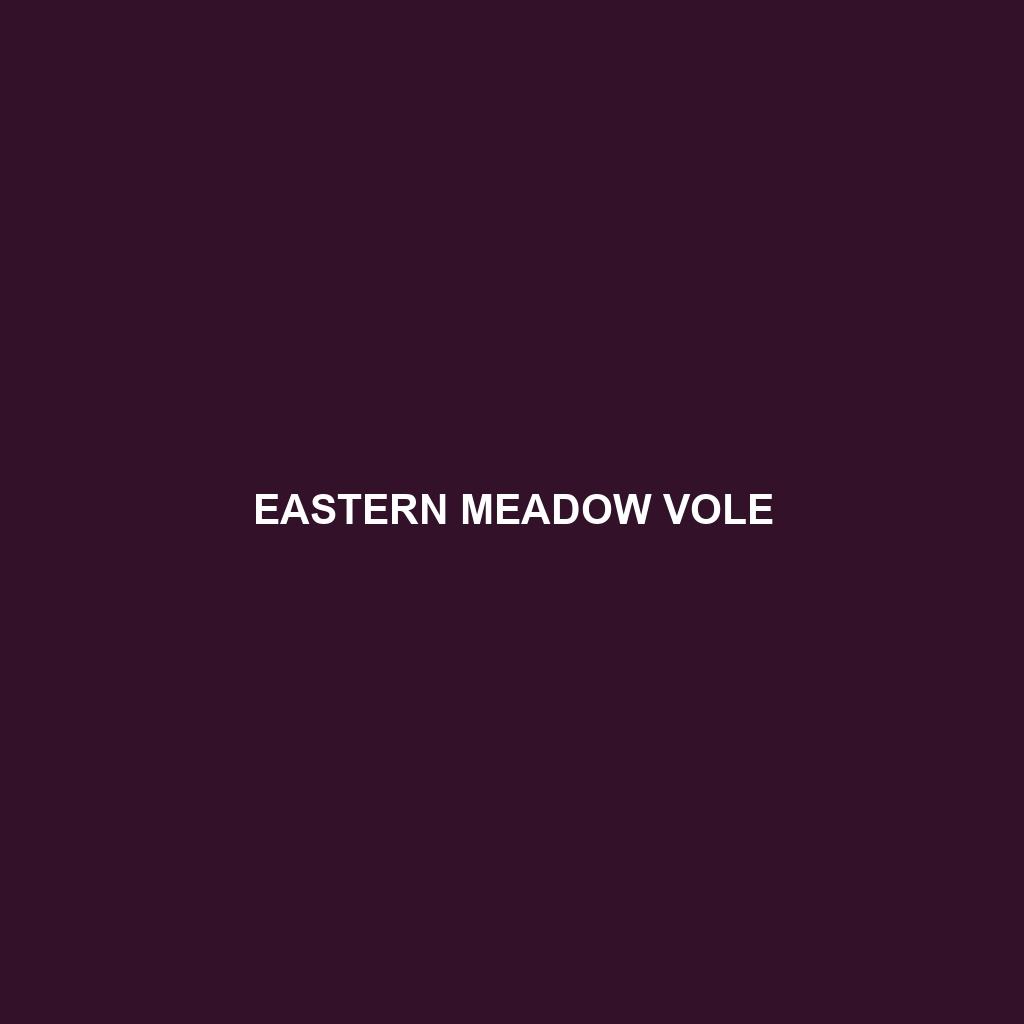
Tag: wildlife conservation
-

Transcaspian Vole
Discover the fascinating **Transcaspian Vole** (*Microtus transcaspicus*), a medium-sized rodent native to the arid landscapes of Central Asia, including **Azerbaijan, Kazakhstan, and Turkmenistan**. Adapted to survive in sparse vegetation, this nocturnal creature plays a crucial role in its ecosystem by foraging on grasses and seeds, creating intricate burrow systems that aerate the soil. Despite their…
-

Schidlovski’s Vole
Explore the intriguing world of Schidlovski’s Vole, a small rodent thriving in the lush forests and grasslands of Eastern Europe and Asia. Delve into their unique physical characteristics, social behavior, vital role in the ecosystem, and the conservation challenges they face as their habitats shrink. Discover why this vulnerable species is essential for maintaining biodiversity…
-

North American Water Vole
Explore the fascinating world of the North American Water Vole (Microtus richardsoni), a medium-sized rodent thriving in wetland habitats across North America. Known for their impressive swimming skills and complex burrowing systems, these creatures play a crucial role in maintaining the health of wetland ecosystems through their diet of aquatic vegetation. Learn about their unique…
-

East European Gray Vole
Discover the fascinating world of the East European Gray Vole (*Microtus rufocanus*), a medium-sized herbivore thriving in Eastern and Central Europe’s grasslands and wetlands. Learn about their social behaviors, unique diet, and crucial role in ecosystem health, while also exploring their reproductive habits and conservation status.
-

Eastern Meadow Vole
Discover the fascinating world of the Eastern Meadow Vole (Microtus pennsylvanicus), a small yet important herbivore found in North America’s grasslands and wetlands. Learn about their unique burrowing behavior, social structure, and pivotal role in maintaining ecosystem balance, as well as their reproductive habits and conservation status in an ever-changing environment.
-

Pyrenean Pine Vole
Discover the intriguing world of the **Pyrenean Pine Vole**, a vulnerable species native to the mountainous regions of the Pyrenees. This nocturnal herbivore plays a crucial role in its ecosystem through seed dispersal and soil aeration while showcasing unique adaptations such as intricate burrow systems and a diet rich in pine needles. Learn about its…
-

Major’s Pine Vole
Discover the unique Major’s Pine Vole (*Microtus majori*), a small rodent native to the northeastern U.S. that thrives in dense pine forests and wetland edges. With its remarkable burrowing abilities and distinct physical traits, this vulnerable species plays a vital role in its ecosystem as both a herbivore and prey. Learn about its habitat, behavior,…
-

Mogollon Vole
Discover the fascinating world of the Mogollon Vole (Microtus mogollonensis), a small herbivorous mammal native to the mountain meadows of Arizona’s Mogollon Rim. Known for their burrowing prowess and social structures, these nocturnal creatures are vital to their ecosystem, contributing to soil health while serving as prey for a variety of predators. Unfortunately, their vulnerable…
-

Caspian Gray Vole
Discover the fascinating world of the Caspian Gray Vole, a medium-sized rodent found in the temperate grasslands of Eastern Europe and Western Asia. Known for their nocturnal burrowing behaviors, adaptable nature, and significant role in maintaining ecosystem health, these vulnerable creatures face challenges from habitat loss. Learn more about their habitat, diet, and reproductive habits…
-

Florida Salt Marsh Vole
Discover the fascinating world of the Florida Salt Marsh Vole, a vulnerable species uniquely adapted to coastal wetlands. Thriving in brackish environments, these small rodents play a significant role in their ecosystem by influencing plant dynamics and serving as prey for various predators. Learn about their habitat, diet, behavior, and the conservation efforts needed to…
Search
Popular Posts
-
Dipsas ventrimaculata
striking Dipsas ventrimaculata, or Ventrimaculate Snake, known for its slender body and striking camouflage. Found in the tropical forests of Central and South America, this nocturnal predator primarily feeds on slugs and snails, playing a vital role in its ecosystem.
-
Dipsas variegata
captivating Dipsas variegata, or variegated snail eater, a striking snake with dark brown and yellow bands, thriving in the humid rainforests of Central and South America. This non-aggressive, nocturnal predator specializes in consuming land snails, playing a crucial role in maintaining ecological balance.
-
Dipsas vagus
Dipsas vagus, or Vagus Snake, a slender, non-venomous species native to tropical Central and South American rainforests, known for its brown and gray camouflage and a diet primarily consisting of slugs and snails. Classified as Vulnerable, this fascinating snake plays a crucial role in its ecosystem by regulating prey populations while employing cryptic behavior to…
Categories
Archives
Tags
animal adaptations (713) animal behavior (4666) animal reproduction (763) bat species (661) behavior (915) biodiversity (6774) conservation (1670) conservation efforts (1415) conservation status (4595) diet (2090) echolocation (822) ecological balance (1400) ecological role (1276) ecology (789) ecosystem (1468) ecosystem role (2606) ecosystem roles (632) endangered species (2368) environmental conservation (657) habitat (3224) habitat conservation (884) Habitat Destruction (922) habitat loss (2877) insectivorous reptiles (643) IUCN Red List (1343) nocturnal animals (2688) nocturnal behavior (2186) omnivorous diet (594) physical characteristics (1958) reproduction (2835) reptile conservation (846) rodent (677) rodent species (1325) seed dispersal (2043) Seed Disperser (950) seed dispersers (590) small mammals (1163) snake reproduction (589) South America (773) species description (713) tropical forests (932) Vulnerable Species (4332) wildlife (2506) wildlife conservation (4371) wildlife protection (799)


